Reaching your 50s is an exciting stage that brings new perspectives on health, wellness, and fitness goals. While it’s natural to feel the impact of aging on your body, it doesn’t mean you have to slow down or give up on challenging yourself. Cardio is a fantastic way to stay in shape, boost heart health, and keep energy levels high, and with a few thoughtful adjustments, it can become even more effective and enjoyable. I’ve rounded up the best cardio tips for women in their 50s to make the most out of their workouts.
As a trainer, I often work with women in their 50s who are dedicated to maintaining their fitness but need guidance on how to make cardio work for them—not against them. These seven cardio tips will help you stay fit, strong, and resilient as you age. From choosing the right types of workouts to focusing on recovery and mobility, these strategies prioritize joint health, energy efficiency, and enjoyment.
Plus, if you’ve been training consistently over the years, don’t think of age as a limitation—it’s more about fine-tuning your approach. So, let’s dive into these tips to help you get the most out of your cardio, ensuring your workouts are effective, safe, and sustainable for the long haul.
Prioritize Low-Impact Cardio
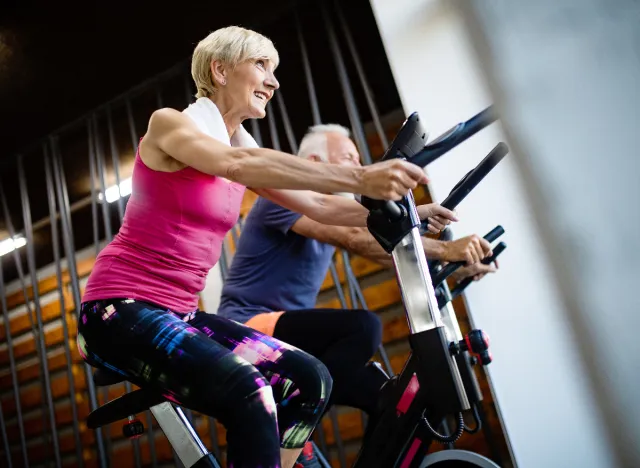

One of the most crucial adjustments in your 50s is incorporating low-impact cardio like cycling, rowing, swimming, or brisk walking. Unlike running or jumping, low-impact cardio protects your joints, which can become more prone to wear and tear with age.
The beauty of low-impact workouts is that they can elevate your heart rate and provide an intense workout without the jarring impact on your knees, hips, and lower back. Over time, low-impact cardio also allows for a more consistent routine, meaning fewer rest days due to soreness or strain and better overall progress.
However, age alone shouldn’t dictate how you train. If you’ve been consistently active, your body is likely well-prepared to handle a variety of exercises. Even though shifting to lower-impact options can help protect your joints, you don’t have to scale back your intensity or ambition.
It’s about making strategic adjustments that allow you to keep challenging yourself without sacrificing long-term joint health or recovery time. This way, you can keep up with workouts that push your limits while minimizing injury risk, so your training stays sustainable—and enjoyable—for years to come.
Add Interval Training for Efficiency


Adding interval training to your routine is a powerful way to keep your workouts efficient and effective. Intervals combine bursts of high-intensity movement with lower-intensity recovery periods, giving you a powerful cardio workout in a shorter time frame.
For women in their 50s, intervals have added benefits beyond saving time. They improve cardiovascular health and can boost metabolism for longer post-workout calorie burn, even in shorter workout periods.
Whether you’re walking, swimming, or using an elliptical, try alternating 30 seconds of intense effort with one to two minutes of a slower pace to get all the benefits without overtaxing your body.
Incorporate Strength-Based Cardio
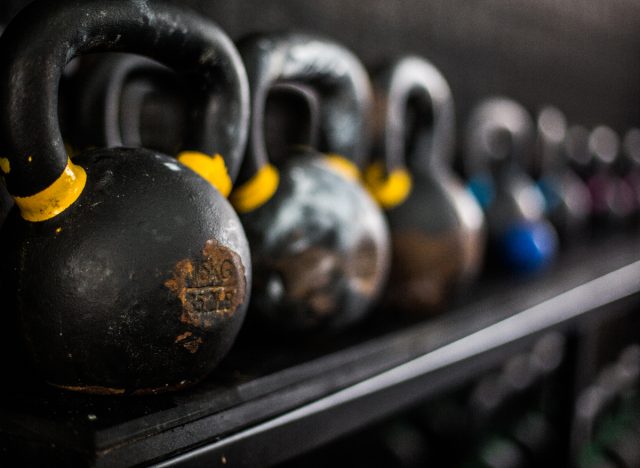

Strength-based cardio (think kettlebell swings, battle ropes, or med ball slams) is another fantastic option I recommend. These types of exercises build muscle and get your heart rate up, improving cardiovascular endurance while strengthening your entire body.
Strength-based cardio is particularly beneficial in your 50s because it helps to maintain muscle mass, which naturally declines with age, and can improve bone density, reducing the risk of osteoporosis. Plus, the variety in these workouts helps prevent boredom, which can be vital to staying consistent with cardio.
Make Time for Steady-State Cardio


Interval training has its place, but don’t overlook steady-state cardio like walking, light jogging, or maintaining a consistent cycling pace. In your 50s, steady-state cardio sessions are an excellent way to build aerobic endurance, reduce stress, and allow your body to recover while remaining active. This type of cardio is less taxing on the body and can help maintain a base level of fitness without overloading the joints or muscles.
Try incorporating two to three days of steady-state cardio for around 30 to 45 minutes each week. Not only does it offer physical benefits, but it can also be a mental break, allowing you to enjoy the movement and clear your mind.
Focus on Flexibility and Mobility
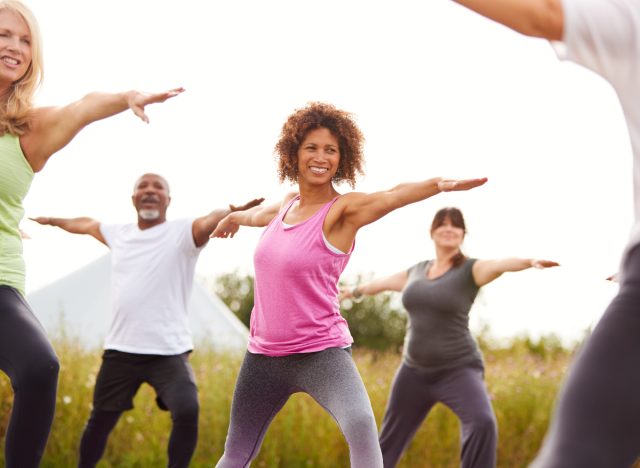

Focusing on flexibility and mobility is non-negotiable. People often use flexibility and mobility interchangeably, but they play distinct roles in your workouts. Flexibility refers to the ability of your muscles to lengthen, allowing a fuller range of motion in a stretch. At the same time, mobility is the ability of your joints to move actively through that range of motion.
Incorporating flexibility and mobility exercises as part of your warm-up or cooldown can significantly improve the quality of your cardio workouts and help with recovery. As we age, joints and muscles tend to tighten, making certain cardio movements more challenging and increasing injury risk.
Spend five to 10 minutes working through dynamic stretches and full-body mobility exercises before and after cardio sessions to keep your muscles and joints in optimal condition. This can enhance your range of motion, making each step or stride smoother and more comfortable, ultimately supporting longevity in your fitness routine.
Listen to Your Body’s Signals
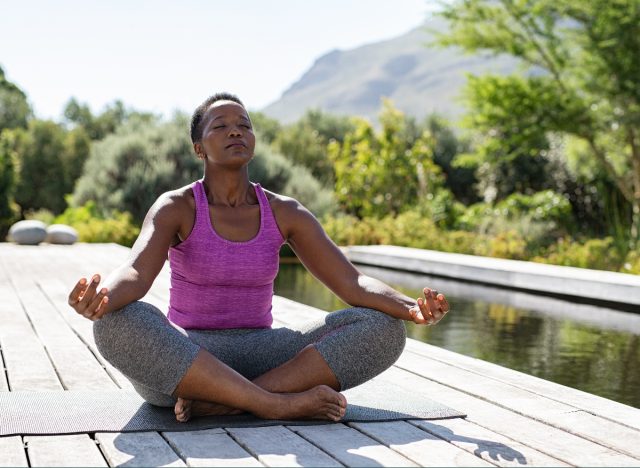

Your body becomes an even more valuable source of feedback in your 50s, and paying attention to what it’s telling you is essential. While pushing through soreness or fatigue might have worked in your younger years, it’s crucial to approach cardio with a mindset that respects recovery.
If you feel unusually tired, sore, or experiencing any discomfort, consider modifying the intensity, switching to a different form of cardio, or allowing yourself a rest day. Recognizing and respecting these cues can prevent burnout and injury, leading to more consistent and enjoyable workouts.
Make Cardio Fun and Social
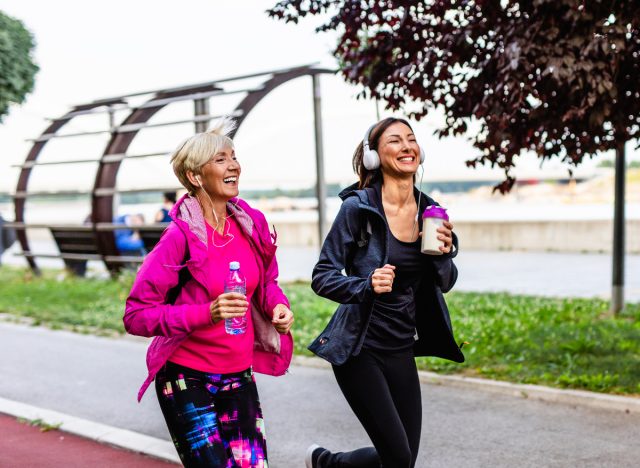

Finally, always appreciate the power of enjoyment in fitness. Cardio doesn’t have to be a solitary activity done on a treadmill; making it social can bring an extra layer of motivation and excitement.
Joining a walking club, trying a dance cardio class, or even getting a friend to go for a hike adds a sense of camaraderie and support, making workouts feel less like a chore and more like a fun part of your week. When you look forward to your cardio sessions, consistency is easier to achieve, making those health benefits more sustainable over time.











